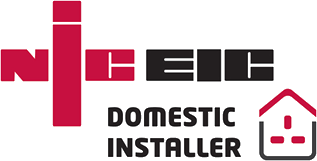Electrical Testing & Inspection
The main purpose of periodic inspection and testing is to detect so far as is reasonably practicable, and to report on, any factors impairing or likely to impair the safety of an electrical installation. A typical periodic inspection notice for an older installation Electrical installation in poor condition present risks of fire as well as electric shock.
The aspects to be covered include all of the following
• Safety of persons against the effects of electric shock and burns
• Protection against damage to property by fire and heat arising from an installation defect
• Confirmation that the installation is not damaged or deteriorated so as to impair safety
• Identification of non-compliances with the current edition of BS 7671, or installation defects, which may give rise to danger.
Testing Procedures
The procedures for periodic inspection and testing differ in some respects from those for the initial verification of new installation work. This is because the subject of an electrical installation condition report is usually an installation which has been energised and in use for some time. Particular attention therefore needs to be given during the inspection process to assessing the condition of the installation in respect of: • Safety • Wear and tear • Corrosion • Damage and deterioration • Excessive loading • Age • External influences • Suitability (taking account of any changes in use or building extensions etc).
Observations
The periodic inspection and testing procedures should identify any damage, deterioration, defects and conditions within the installation that give rise, or potentially give rise, to danger. The procedures should also identify any deficiencies for which remedial action would contribute to a significant improvement in the safety of the electrical installation. After due consideration, each such observed safety issue should be recorded at the appropriate point in the inspection or test results schedule, and further detailed in the ‘observations’ section of the report.
Classification Codes
Each observation relating to a concern about the safety of the installation should be attributed an appropriate Classification Code selected from the standard codes C1, C2, C3 and FI. Each code has a particular meaning:
Code C1 - Danger present Risk of injury. (Immediate remedial action required) danger exists, requiring immediate remedial action. The persons using the installation are at immediate risk.
Code C2 - Potentially dangerous (urgent remedial action required) whilst an observed deficiency is not considered to be dangerous at the time of the periodic inspection, it would become an immediate danger if a fault or other foreseeable event was to occur in the installation or connected equipment.
Code C3 - Improvement recommended whilst an observed deficiency is not considered to be a source of immediate or potential danger, improvement would contribute to a significant enhancement of the safety of the electrical installation.
FI - Further investigation required without delay any observation that could reasonably be expected to reveal danger or potential danger.
Summary of the conditions of the installation
Describes the general condition of the installation in terms of electrical safety, considering the specific observations made. Providing a clear summary of the condition of the installation having considered, for example: • The adequacy of the earthing and bonding arrangements • The suitability of the consumer unit and other control equipment • The type(s) of wiring system, and its/their condition • The serviceability of equipment, including accessories • The presence of adequate identification and notices • The extent of any wear and tear, damage or other deterioration • Changes in use of the premises that have led to, or might lead to, deficiencies in the installation.
Letting & Landords
There are new regulations that require private landlords to ensure that electrical safety standards are met, providing compliance with BS 7671:2018. The new regulations affect all new specified tenancies from 1 July 2020 and all existing tenancies from 1 April 2021.
The regulations apply to private landlords for all new specified tenancies from 1 July 2020 and all existing tenancies from 1 April 2021. An ‘existing specified tenancy’ means a tenancy for a specified period of time that was granted before the regulations come into force, whereas a ‘new specified tenancy’ means a tenancy specified for a period of time granted on or after these regulations come into force.
This includes houses in multiple occupation (HMOs), with the new regulations replacing the existing requirements for electrical testing of HMOs (A house is considered to be an HMO when it has at least three tenants forming more than one household, with the tenants sharing a toilet, bathroom or kitchen with the other tenants).
There are some tenancies that are excluded from the scope of the new regulations.
These include:
• private registered providers of social housing
• shared accommodation with the landlord or landlord’s family
• long leases, i.e. longer than seven years
• student halls of residence
• hostels
• refuges
• care homes
• hospitals
• hospices
• other accommodation relating to healthcare provision.
Under the new regulations, private landlords are required to ensure that:
• the electrical safety standards are met during any period when the residential premises are occupied under a specified tenancy, and
• every electrical installation is inspected and tested at regular intervals by a suitably qualified person (regular intervals at intervals of no more than five years).



